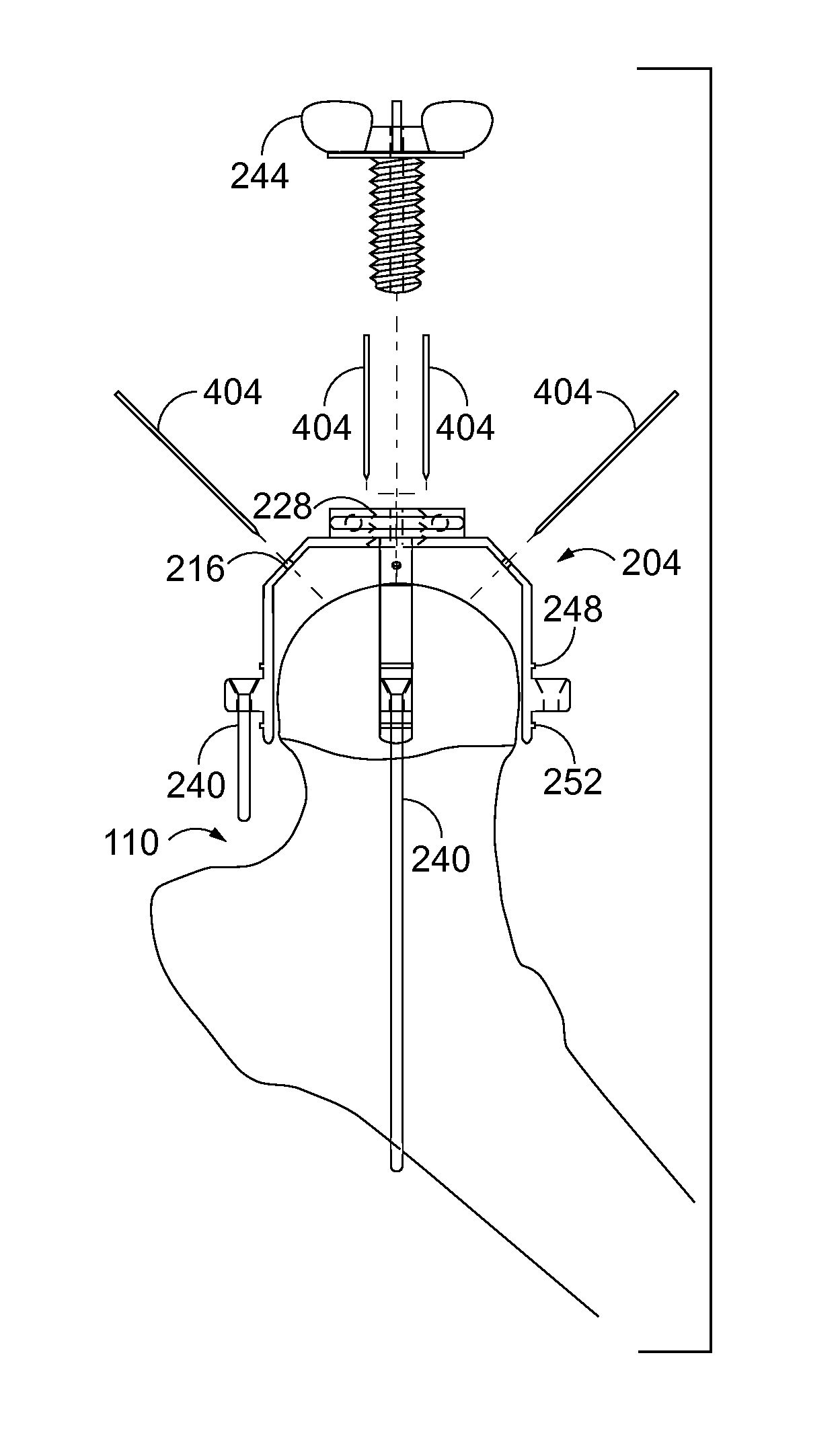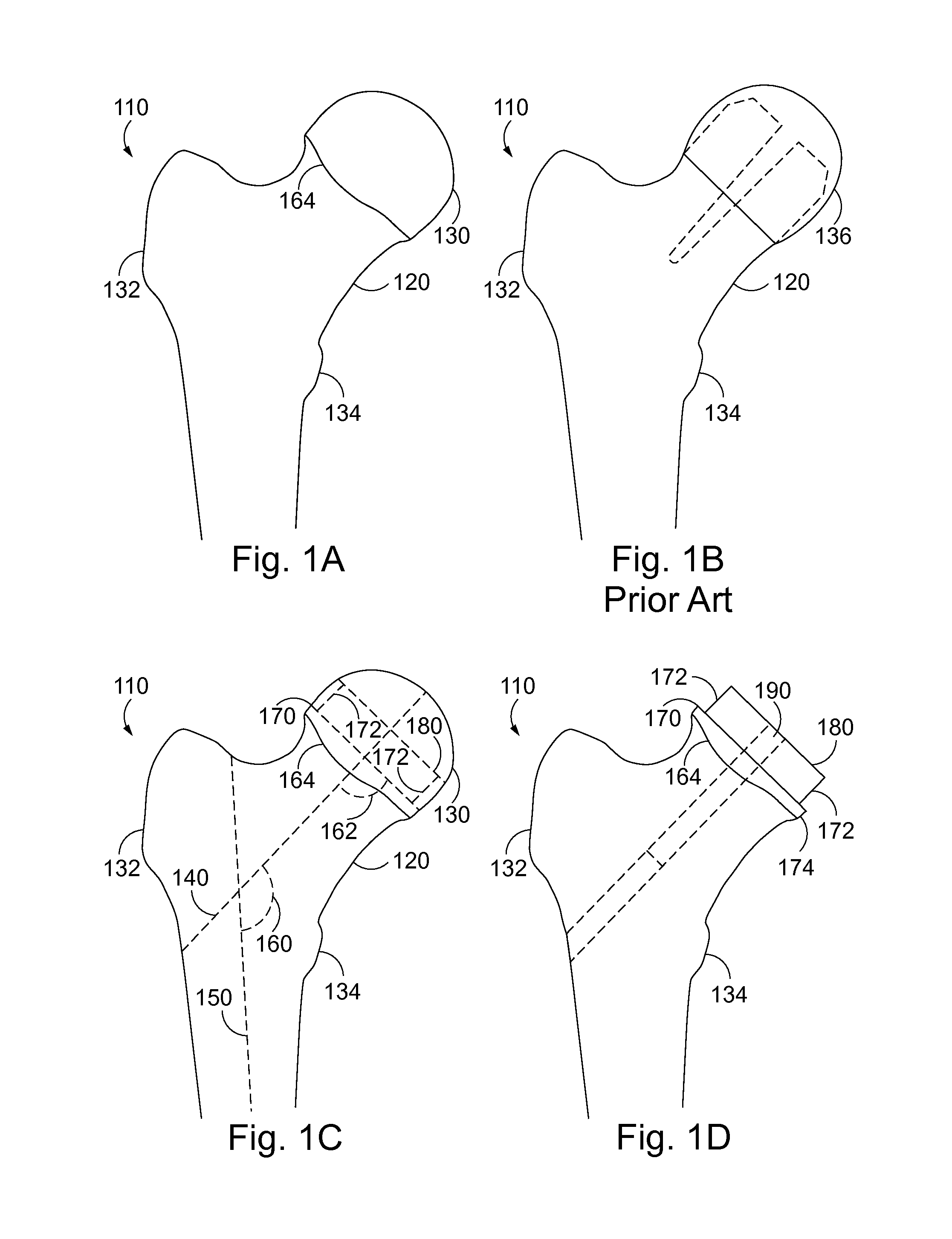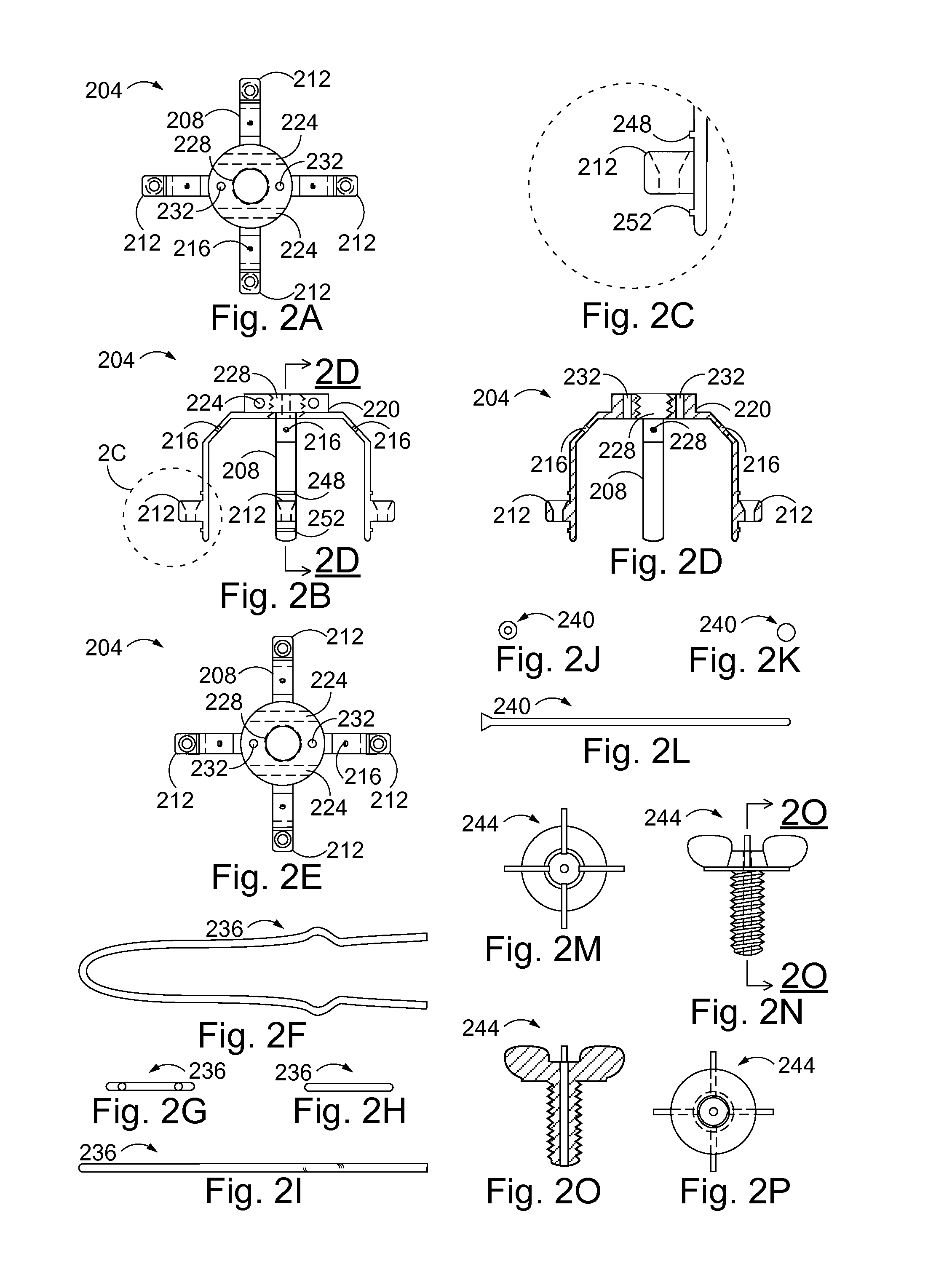Method and System for Modular Hip Resurfacing
a hip resurfacing and modular technology, applied in the field of hip resurfacing arthroplasty, can solve the problems of femoral neck fracture, no additional fixation options for implants, and amstutz, bhr, bmhr systems do not allow for modular attachments, so as to simplify the process of performing osteotomy, reduce the risk of femoral neck notching, and facilitate the precise drilling of outer holes.
- Summary
- Abstract
- Description
- Claims
- Application Information
AI Technical Summary
Benefits of technology
Problems solved by technology
Method used
Image
Examples
Embodiment Construction
[0203]FIG. 1A is a front view from anterior of a human proximal femur 110 including femoral neck 120, femoral head 130, greater trochanter 132, lesser trochanter 134 and cartilage border, articular rim 164. FIG. 1B is a front view illustrating a proximal femur following bone cuts and implantation of a hip resurfacing femoral implant 136, according to previous devices such as the Birmingham Hip Resurfacing implant. The dashed line in FIG. 1B illustrates the required bone cuts following cylindrical reaming and osteotomies, for hip resurfacing femoral implants according to previous devices. Such a hip resurfacing femoral implant, as illustrated, has a solid stem without internal threading. Bone preparations for implantation of this hip resurfacing implant require cylindrical reaming of the femoral head past the cartilage edge, articular rim 164. As is typical with this implant, the outer, cortical, strongest bone of the femoral head is completely removed. The hip upper aspect of the hi...
PUM
 Login to View More
Login to View More Abstract
Description
Claims
Application Information
 Login to View More
Login to View More - R&D
- Intellectual Property
- Life Sciences
- Materials
- Tech Scout
- Unparalleled Data Quality
- Higher Quality Content
- 60% Fewer Hallucinations
Browse by: Latest US Patents, China's latest patents, Technical Efficacy Thesaurus, Application Domain, Technology Topic, Popular Technical Reports.
© 2025 PatSnap. All rights reserved.Legal|Privacy policy|Modern Slavery Act Transparency Statement|Sitemap|About US| Contact US: help@patsnap.com



